by W.S. Cranshaw** (2/20)
Quick Facts….
- Emerald ash borer wounds ash trees by tunneling areas under the bark. When wounds become extensive, trees show symptoms of decline and, ultimately, are usually killed.
- Several types of insecticide applications can control emerald ash borer.
- Emerald ash borer insecticides move systemically in plants and are typically applied as either soil drenches, trunk sprays or direct injections into the trunk, depending on product.
- Insecticides can prevent new injuries by emerald ash borer and if damage to the tree caused by the insect is not too advanced, trees can recover when insecticides are used.
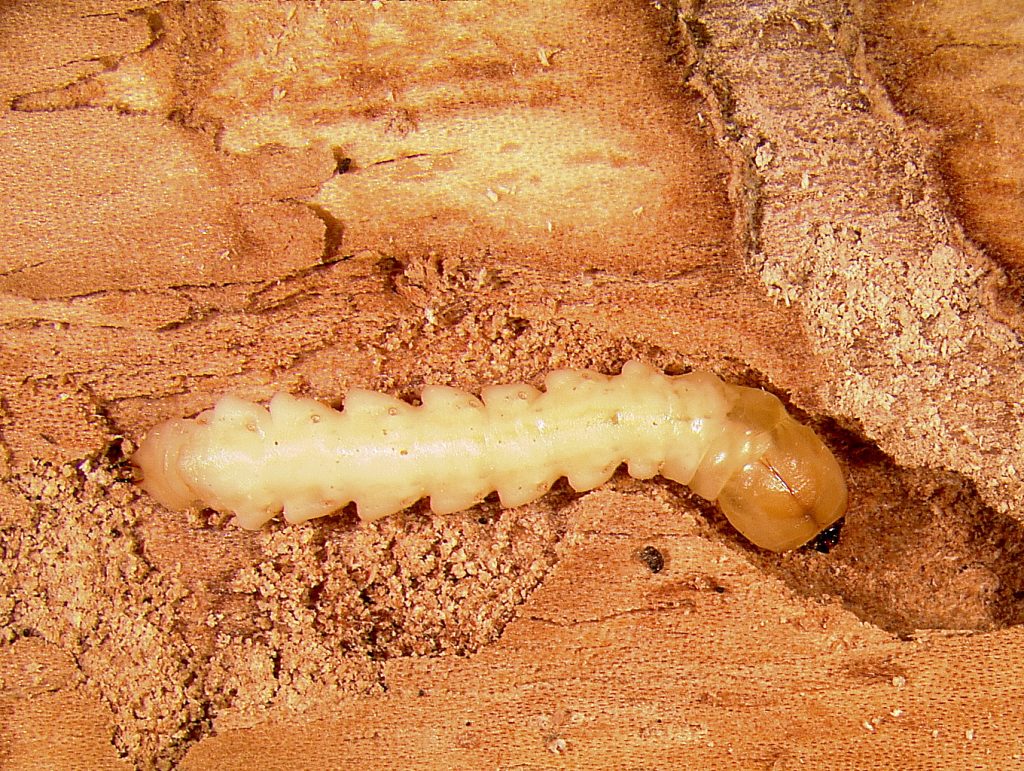
Emerald ash borer (EAB) is a beetle that attacks, and can ultimately kill, ash trees (Fraxinus species). This includes species of trees that are very commonly planted in Colorado, particularly green ash and white ash, including the popular cultivar ‘Autumn Purple’.
Trees are damaged when the immature stage of the insect, known as a flatheaded borer, develops in the living tissues (cambium) present just under the bark. The tunneling by the insect reduces the ability of the tree to move water and nutrients, producing a progressive weakening of the plant. As the number of these wounds increase over time effects on tree growth become more apparent. Damage usually begins at the top of the tree, and this may result in a thinning of the leaf canopy, as smaller leaves are produced. Twigs and branches may die and in later stages of an infestation the insect may be found in high numbers in the main trunk.
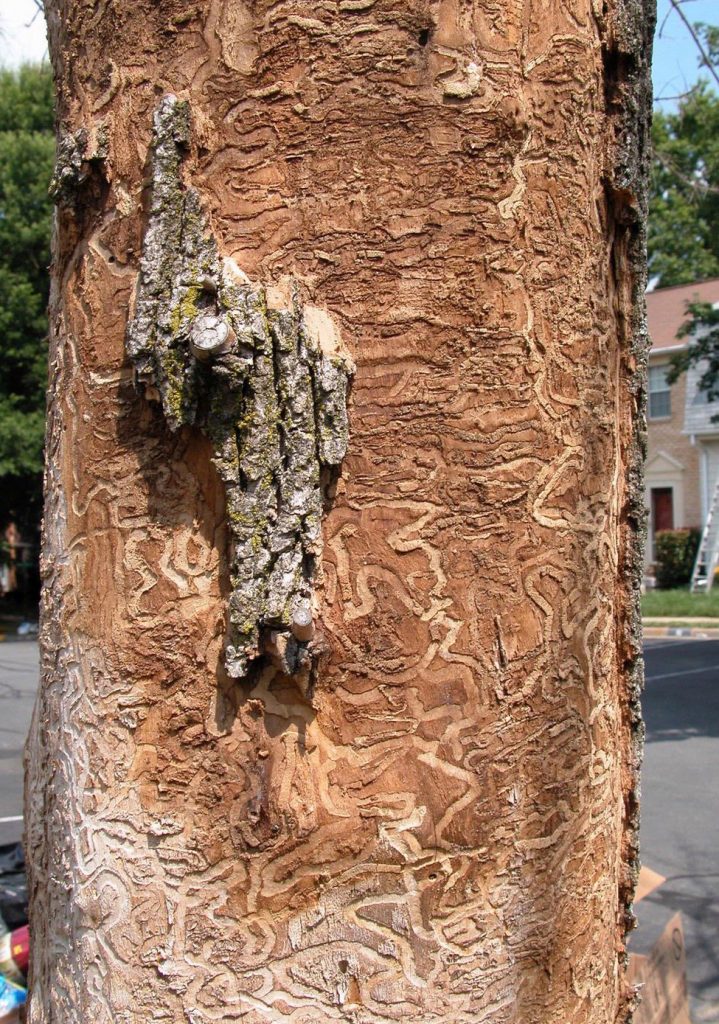
Photograph of the larva courtesy of David Shetlar, The Ohio State University. Photograph of the ash trunk with EAB tunneling courtesy of Eric Day, Virginia Polytechnic and State University.
Once emerald ash borer has begun to infest a tree the injury it causes will increase over time so that the tree will ultimately be killed, unless treated with insecticides. The length of time it will take from the day a tree is first colonized by emerald ash borer until it will die will normally take several years, but the speed of tree decline will depend on many factors. These include the original health of the tree, weather, and the number of emerald ash borers developing in nearby trees.
Insecticides Used to Control Emerald Ash Borer
Individual trees can be protected from emerald ash borer using certain insecticides. These insecticides can be used preventively, applied when the insect is first detected near the neighborhood. Most of the emerald ash borer insecticides can also be used effectively a couple of years after emerald ash borer has first colonized a tree, when populations of the insect are still low and tree damage is minimal. One of the insecticides, emamectin benzoate, has been demonstrated to often allow tree recovery as a “rescue treatment” even when emerald ash borer injuries have begun to produce as much as a 30 percent reduction visible thinning of the leaf canopy of the ash tree.
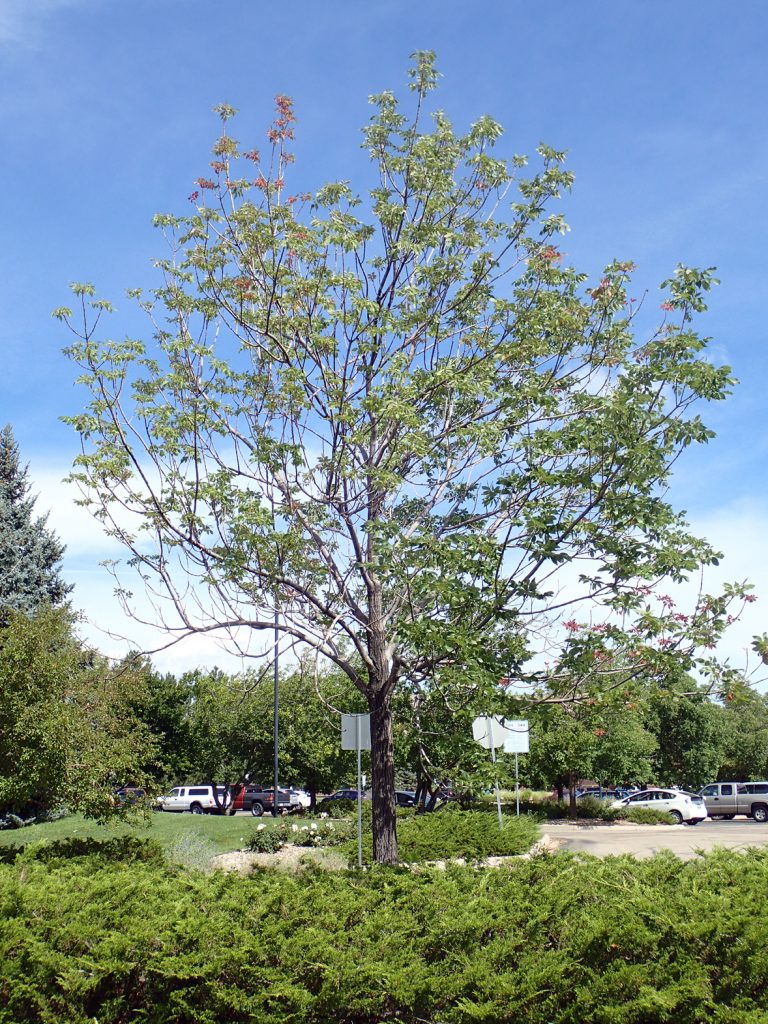
Emerald ash borer is controlled by the use of certain systemic-types of insecticides that can be taken into the tree in some manner and will then move to areas where it can kill adults (leaves) or the flatheaded borer larvae (cambium). This is a different approach than is used for many other wood boring insects. Most wood borers, and bark beetles, are controlled using preventive insecticide sprays applied to the bark that kill the insects after egg hatch before they enter the tree (Fact Sheet 5.530, Shade Tree Borers). Emerald ash borer is not effectively controlled in this manner, but certain systemic insecticide can be very effective that kill either the adults as they feed on leaves and/or the developing larvae underneath the bark.
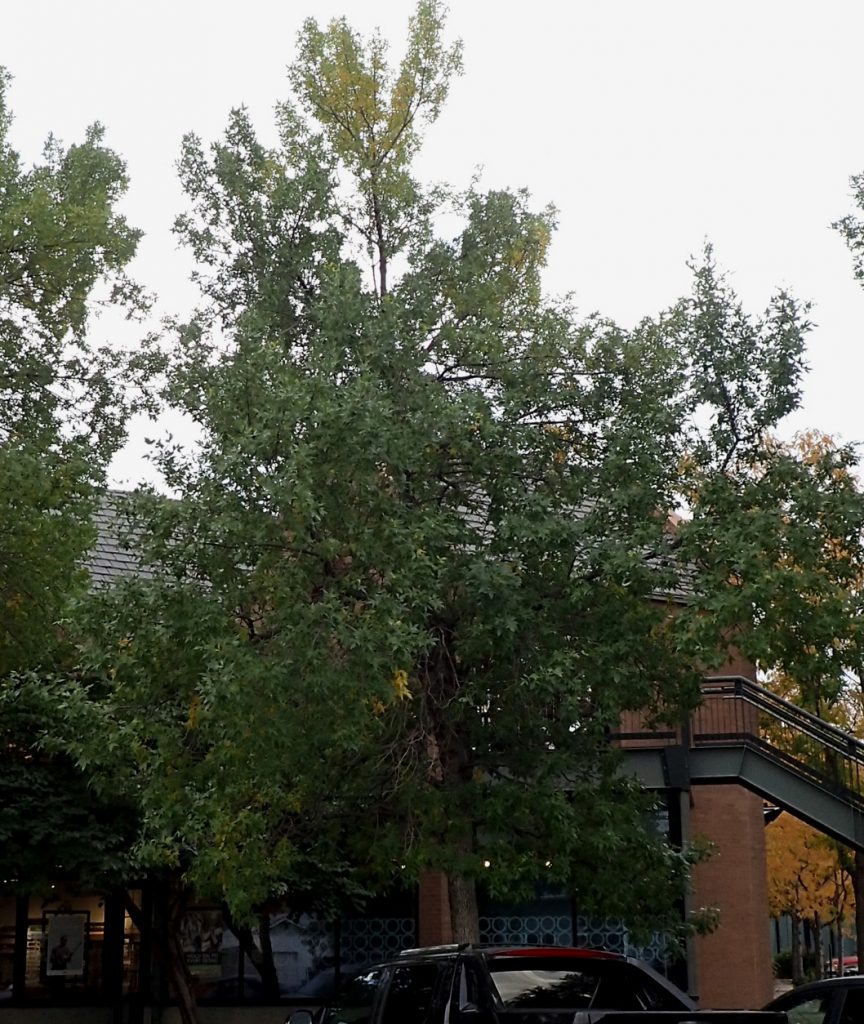
There are four active ingredients used to control emerald ash borer: imidacloprid, dinotefuran, emamectin benzoate, and azadirachtin.
Imidacloprid. Imidacloprid is the most easily applied and usually least expensive of the insecticides used to control emerald ash borer. It is the only EAB insecticide that can be found for sale at retail outlets (nurseries, hardware stores, box stores).
Imidacloprid is normally applied as a treatment to the soil that is then picked up by the roots of the tree. This can be done as a drench, mixed with several gallons of water, poured onto the surface around the base of the trunk of the tree. If mulch is present around the tree this must be removed prior to application. This treatment cannot be made if flowering plants are present around the base of the tree, as the insecticide may move into the nectar of plants exposing it to pollinating insects. Alternatively, imidacloprid can be injected into the soil by a professional, using special equipment, with injections made at multiple points under the canopy of the tree.
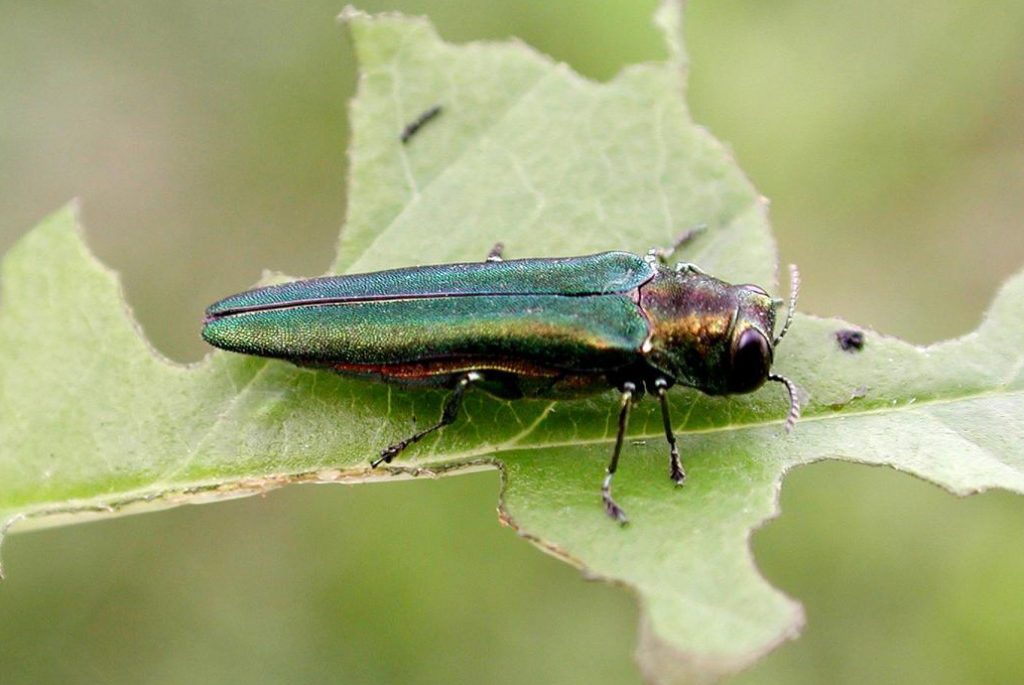
Whether applied as a soil drench or injected, the soil must remain moist to allow the roots of the tree to pick up and to then transport the insecticide through the tree. Immediately after application the treated area should be watered and continued watering may be necessary to keep the soil moist for two to three weeks after application. Compared to other EAB insecticides, imidacloprid moves slowly into the tree and can be expected to take two or three weeks to be present in high enough levels to kill emerald ash borer. If soil remains dry after application, this method of treatment will be ineffective.
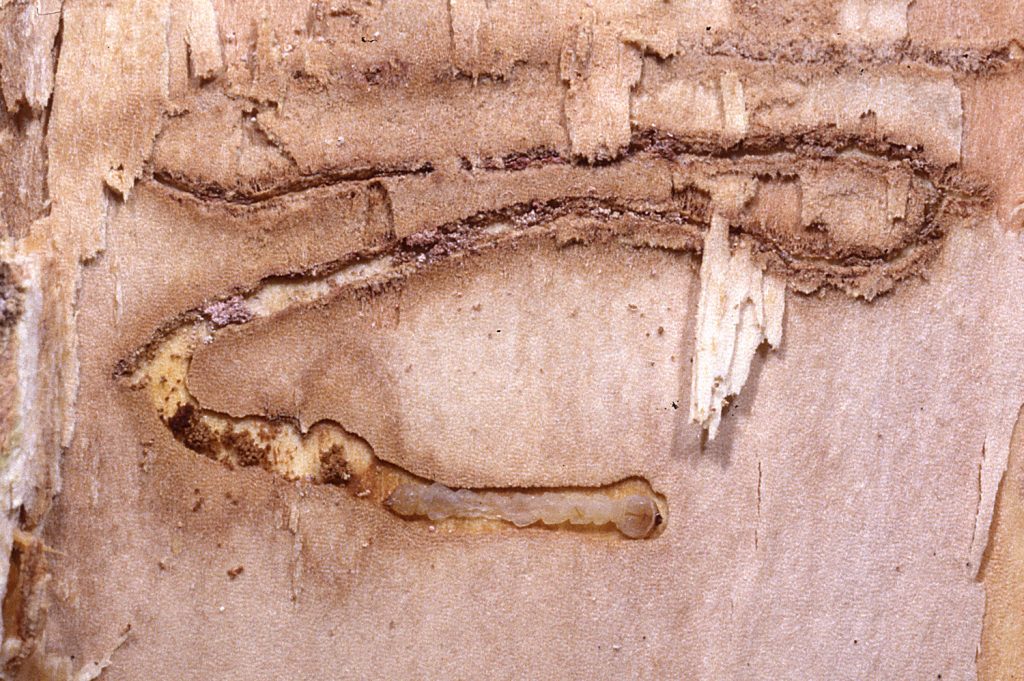
The amount of imidacloprid to apply for EAB control is related to the size of the tree, as it is for all of the EAB insecticides. However, in large diameter trees that support a very large canopy, rates need to be further increased. The rate of imidacloprid must be doubled in trees with a diameter of over 15 inches to provide control. This higher rate of use is not allowed on retail formulations of imidacloprid.
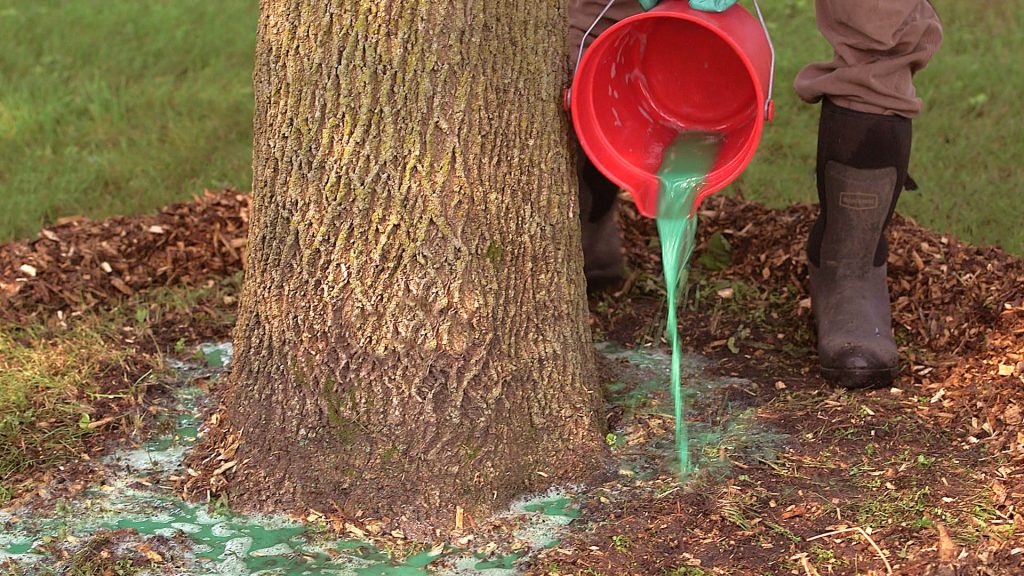
Imidacloprid will provide control for a single season. Treatments are best applied in spring shortly after bud break so that it will be present in leaves when newly emerged adults first begin to feed on leaves, before they begin laying eggs. Adults can normally be expected to begin to emerge from trees in mid-late May and adults will continue to emerge from trees into early summer.
Dinotefuran. Dinotefuran is most often used as a spray on the trunk. This insecticide is more mobile in plants than are the other EAB insecticides and is able to move through the bark and then move rapidly through the tree. Dinotefuran can also be applied to the soil in the same manner as imidacloprid, but is considerably more expensive and control is similar by this method.
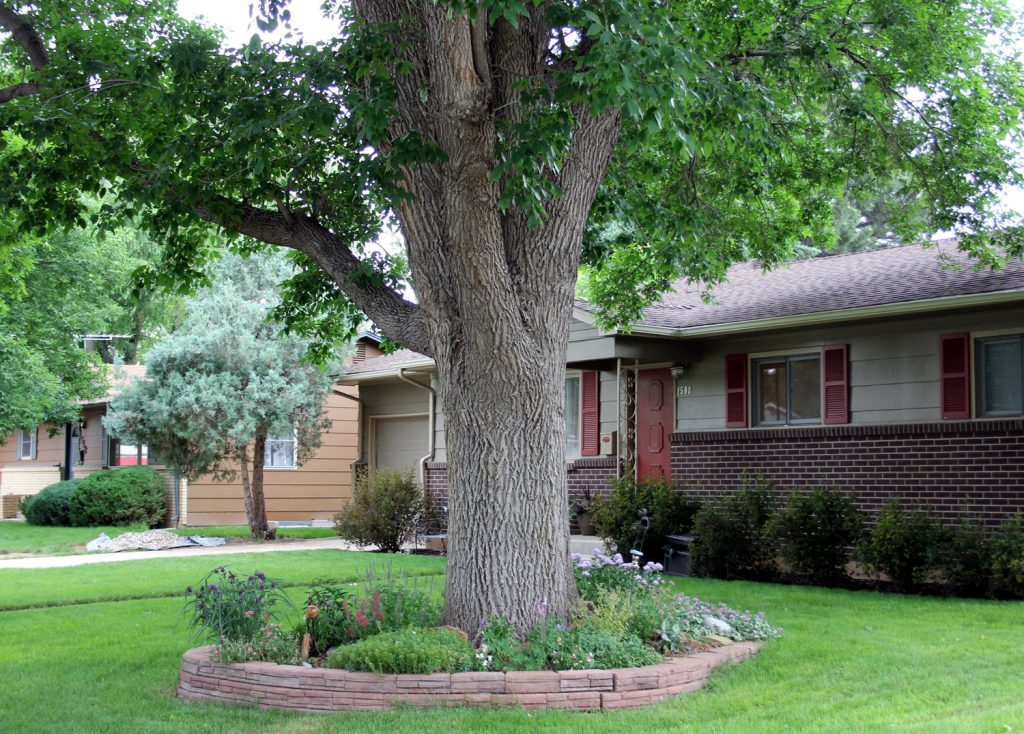
Dinotefuran is not available through retail outlets and it is complicated to apply it correctly at the proper rate as a trunk spray. The insecticide is mixed with water and the amount of the spray mixture needed will vary by the size of the tree. Professional application is highly recommended.
Dinotefuran will provide control for a single season. Treatments are best applied in spring when trees are mostly leafed out about a month following bud break. Since it is more mobile in the plant, dinotefuran can effectively move into leaves more rapidly than imidacloprid, usually within a week, where it will be able to kill adult beetles. However, if applied too early it may not remain in sufficient concentration when it is needed to kill developing larvae under the bark. As for all of the insecticides used for EAB control, following application the soil must be moist enough for the plant to be actively moving water. Supplemental irrigation is needed if the site where the tree roots are growing is droughty.
Emamectin Benzoate. Emamectin benzoate can only be applied through injection of the trunk using specialized equipment. Professional application is required both to apply it effectively and to avoid plant injury.

Emamectin benzoate is extremely effective for emerald ash borer control. It can very reliably control emerald ash borer for two years following application and increasing evidence indicates that it may usually be effective when used at 3 year intervals.
Emamectin benzoate has been demonstrated to provide effective “rescue treatment” of ash trees that have sustained enough injury over the years that there is a reduction in the thickness of the leaf canopy due to accumulated EAB injuries. This insecticide has been shown able to allow tree recovery when trees have sustained some EAB injury but it is not extensive enough to have produced more than a 30% thinning of the canopy of the tree.
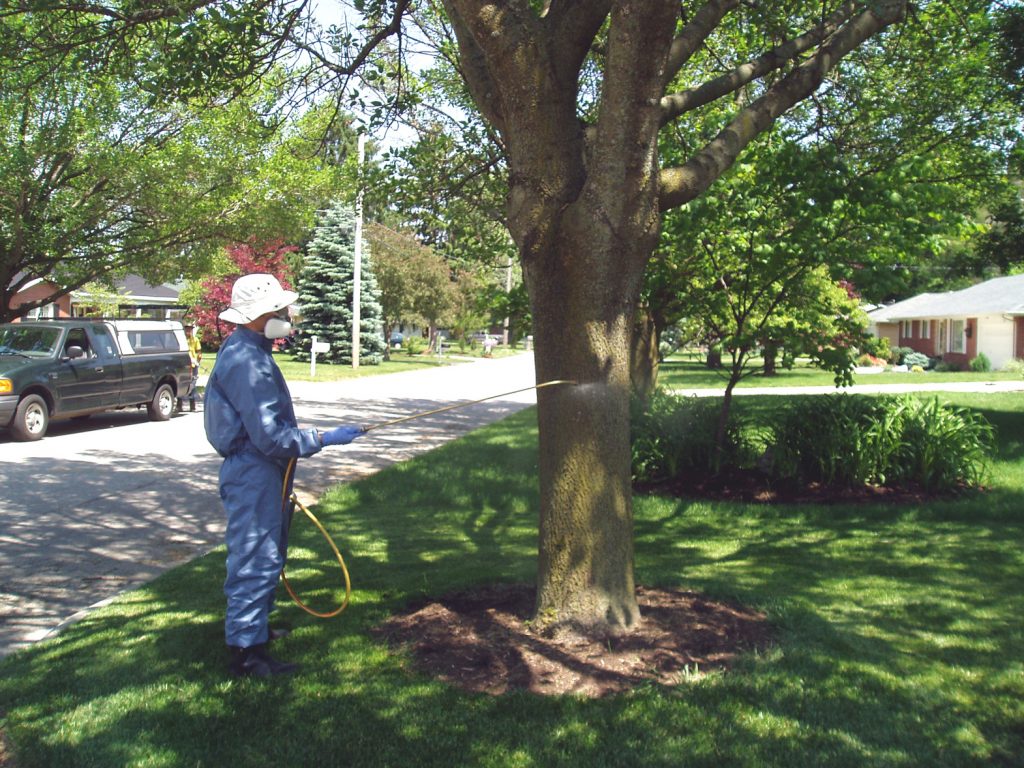
Because of its persistence in the tree and ability to kill late stage larvae, there is more latitude in when the insecticide can be applied. Treatments are probably best applied in the period from spring bud break through late June or early July.
Azadirachtin. Azadirachtin is a natural-sourced insecticide, extracted from the seeds of the neem tree. For emerald ash borer control it can only be applied through injection of the trunk using specialized equipment. Professional application is required both to apply it effectively and to avoid plant injury.
Trunk injections of azadirachtin can be expected to provide two years of control in the early stages of an EAB invasion and one year of control when EAB populations reach the peak of their abundance. Because of its persistence in the tree and ability to kill late stage larvae, there is more latitude in when the insecticide can be applied. Treatments are probably best applied in the period from spring bud break through late June or early July.
When to Start Treatments for Emerald Ash Borer
There are no guidelines for when it is best to start insecticide treatments for emerald ash borer. All ash are not necessarily candidates for treatment and trees should be carefully and subjectively assessed for overall size, health, and environmental and aesthetic function. The ultimate decision on whether treatment is appropriate must be made by the tree owner based on their own priorities and judgement as what is the situation with the ash tree on their property and the current situation with emerald ash borer at the site.

Present Situation (May 2020) with Emerald Ash Borer in Colorado
Emerald ash borer was first found in Colorado in 2013, in Boulder, and Colorado is presently the only state west of the High Plains where this insect is currently known to be present. Over five years following its Colorado discovery, new emerald ash borer detections occurred in several other Boulder County communities (Longmont, Superior, Lafayette, Lyons). In 2019, it was detected in a few sites immediately adjacent to Boulder County, including Broomfield, Westminster, and a rural area of Larimer County southwest of Berthoud. Most recently (May 2020) emerald ash borer was found in northern Fort Collins, presumably by movement of infested wood into the area a few years earlier. Over time, this insect can be expected to expand its range and increase in number throughout the Northern Front Range, moving naturally or by human assistance.
Updates on the known locations of emerald ash borer within Colorado are tracked by the Colorado Department of Agriculture and can be found at the CDA Emerald Ash Borer home page.
Other Sources of Information on Use of EAB Insecticides
Insecticide Options for Protecting Ash Trees from Emerald Ash Borer, 3rd Edition
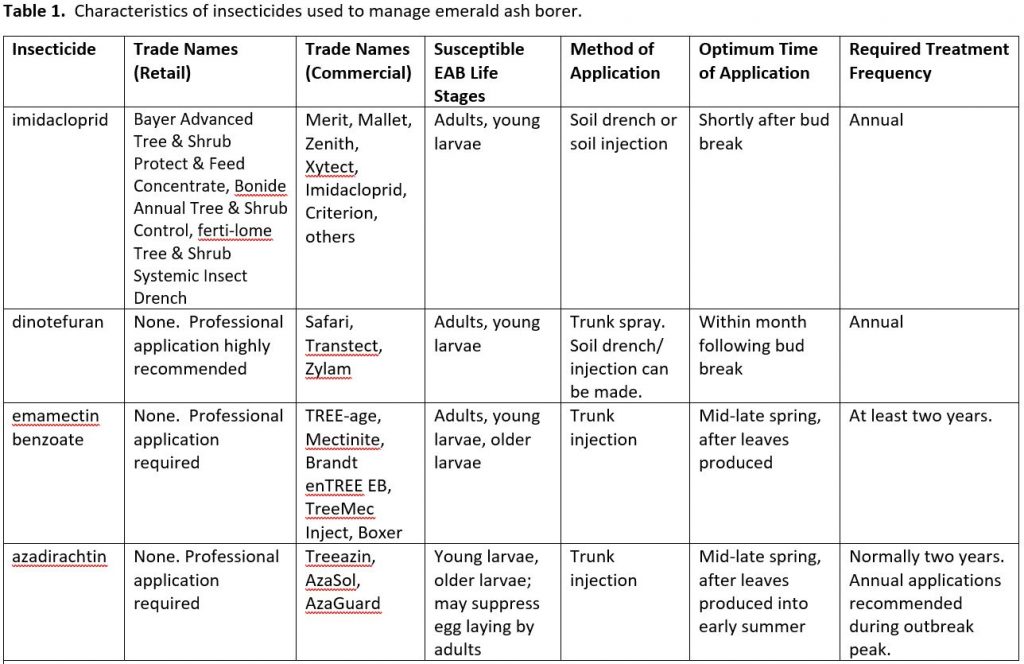
*Extension entomologist and professor, bioagricultural sciences and pest management. 5/20.





